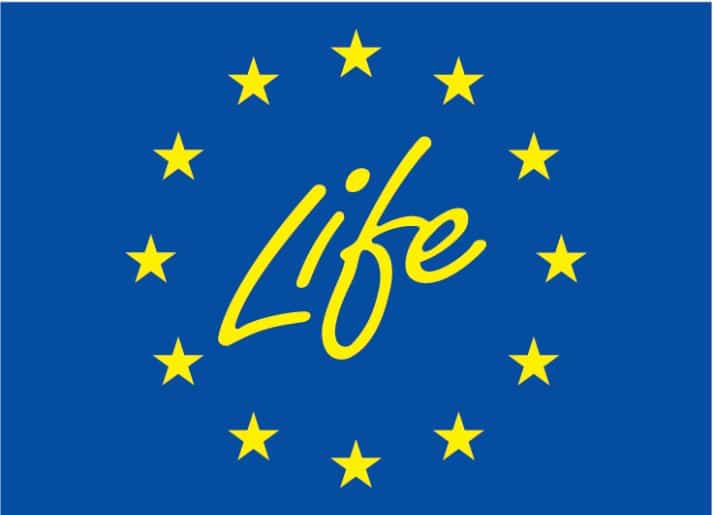Impacts and evolution of emissions trading systems: insights from science and regulation
Highlights of the 2023 Net Zero Carbon market Policy Dialogue
On Thursday 21 September 2023, FSR Climate welcomed about 50 participants online and in person to the Net Zero Carbon Market Policy Dialogue (NZCMPD). The policy dialogue is part of the LIFE COASE project, which spans three years and focuses on different aspects of the EU Emissions Trading System (EU ETS), including its integration with other carbon markets. The policy dialogue offers the opportunity to academics, regulators, and industry stakeholders in the field of emissions trading to discuss the global net-zero targets and the role of carbon markets in achieving them. The project’s annual policy dialogue chaired by Simone Borghesi and Jos Delbeke puts the spotlight on some of the most pressing issues for ETSs worldwide.
Social dimensions of emissions trading
The first panel of the policy dialogue discussed the social implications of carbon pricing. It emerged clearly from the session that the social aspects of climate and ETS policies are gaining new importance, both in academia and in policymaking. There is a growing awareness that carbon pricing, especially when applied to heating and transportation, can have significant distributional consequences. Higher energy and fuel prices and a shift in labour markets may present a particular burden for low-income households. This is owed to the fact that poor households spend a higher proportion of their income on energy and transportation and that they have fewer resources to adapt to changes in the labour market. In fact, studies indicate a regressive effect of carbon pricing, meaning that poorer households are affected more than wealthier ones. However, if only a part of the revenues that are generated in Emissions Trading Systems (ETSs) are redistributed to households, the effect can be turned around from regressive to progressive, benefiting the most affected. It is thus an important task of policy to use ETS revenues wisely by designing targeted instruments for a just transition.
The EU’s Social Climate Fund (SCF) is a prime example of such an instrument, since it will channel part of the revenues from the EU ETS to support vulnerable groups affected by rising energy or transport costs. The fund, which is meant to come into force in 2027, allows for temporary direct income support and for investments in energy efficiency, renovation of buildings, clean heating, and cooling as well as low emission mobility including public transport. The discussion highlighted some of the major challenges that persist with regard to revenue spending and the SCF. First, more data and indicators are needed to identify individuals most at risk of being impacted by rising energy and transport costs. While the evidence indicates that, on average, low-income households are disproportionately affected, it is crucial to recognize significant disparities within income groups. Factors like rural or urban residence, the energy efficiency of homes, and commuting requirements all influence how households are impacted. Second, governments need to choose wisely how to spend the revenues. There was a clear preference for green investments, such as energy-efficient renovations, rural transport initiatives, and electric vehicle adoption. These not only reduce long-term costs for households but also contribute to climate targets. Direct income support to households, in contrast, may be useful to grant but not as effective. It was pointed out that countries may be reluctant to an overly strict earmarking of the revenues for other political and institutional reasons than a lack of environmental commitment. Lastly, an important emphasis was placed on the role of perceptions of the distributional consequences of carbon pricing instruments. These perceptions may differ quite drastically from reality and even risk to be intentionally distorted which strongly affects the social acceptability of policies. The session concluded that carbon pricing raises large amounts of money that, spent wisely, can benefit poor households, and accelerate the green transition. Both good design and better communication about social distribution measures, including the SCF are needed.
Competitiveness and carbon leakage
The second panel of the policy dialogue delved into the issue of competitiveness and carbon leakage within ETSs. The concern has long been that carbon pricing might jeopardize the competitiveness of domestic industries and lead to carbon leakage. This risk arises from the difference in environmental ambition and stringency of climate policies across countries that would negatively impact the competitiveness of firms in countries with more ambitious climate goals, potentially shifting pollution-intensive production to less climate-stringent regions. The panel discussed the heightened risk of carbon leakage due to the high carbon prices coupled with a significant increase in energy prices resulting, among others, from the war in Ukraine. In fact, energy-intensive industries in Europe reported a decline in production both within Europe and in exports, while imports were on the rise, indicating a loss of competitiveness. When looking at the academic evidence for carbon leakage, it was highlighted that while the evidence at the aggregate level is only minor, significant heterogeneity appears at the sector and firm-level. This means that different countries, sectors, and firms within those sectors may be affected very differently from carbon leakage. It was noted that policies were needed to support affected firms that are concentrated in specific geographical areas or sectors. Flexibility in policy design was also stressed as essential to tackle these differentiated impacts.
There was general consensus that the EU’s introduction of the carbon border adjustment mechanism (CBAM) could represent an initial step in addressing this challenge. The ongoing negotiations surrounding CBAM have already had significant repercussions in other ETSs, including those in the US and China. However, some scepticism about the effectiveness of this instrument in preventing carbon leakage and the feasibility of its implementation remained. Participants agreed that the EU’s focus should be on safeguarding industries most vulnerable to carbon leakage, with an emphasis on investment rather than compensation measures. It was also emphasized that in parallel, the EU should intensify efforts in the realm of innovation policy and continue initiatives related to international cooperation, the reduction of fossil fuel subsidies, and the facilitation of trade policies.
Ex-ante and ex-post studies of ETSs
The third session of the policy dialogue focused on recent ex-ante and ex-post studies of ETSs. The participants were informed of the outcomes of a workshop on the ex-ante modelling and a conference on ex-post studies of ETSs that took place in June. The goal of the workshop was to gain insights into the functioning of different models, many of them focusing on the EU ETS. Altogether, the results indicated a growing interest in capturing market imperfections and investor behaviour as well as in accounting for the increasingly dynamic policy landscape. However, it was noted that to make the ex-ante models more robust, industry feedback was needed to better understand technology assumptions and foresight. It clearly emerged from the discussion that further improving ex-ante models is an important exercise for academia and policy makers alike. While the models might not be able to reliably predict future carbon prices, they could play a more important role in understanding the effects of different policies and design changes.
Looking at the results of the conference on ex-post studies, which also centred on social aspects and competitiveness in ETSs, it was observed that many of the research questions and methods have remained consistent over the past years. However, a new focus on social aspects, perceptions, and public acceptability was noted. In addition, issues surrounding the spending of revenues and the case of CBAM were addressed in many studies. There was general agreement, that accelerated progress in ex-post research was needed to better understand and assess the real-world implications of carbon pricing policies. It was also underlined that new ex-post studies could contribute to a deeper understanding of the interactions between different policies.
State-of-play in international carbon markets
The fourth session of the policy dialogue addressed the recent trends in regulated carbon markets and linkability worldwide. Today 28 compliance markets can be found worldwide, with notable gaps on the African continent and in America. However, these markets differ significantly in size, price level, sectors covered and regulations. Since each system is tailored to its domestic circumstances and economic challenges, regulators are faced with the challenge of linking highly different ETSs. While there was a generally shared wish for more integrated global carbon markets, participants emphasised the importance of aligned ambition and consistent market regulations as important preconditions. Many questions were raised as to the benefits of linking when markets greatly differ in size, the scenarios when the ETS cap reaches zero and the prospects of linking the EU ETS 1 and 2 in the future.
The discussion also focused on markets for carbon credits and the urgent need for reliable carbon removals. It was highlighted that there remains some scepticism towards carbon credits, due to the absence of established guidelines to ensure their quality. The discussion demonstrated that many open questions relating to the authorization process, dispute settlement and capacity gaps in developing countries remain.







